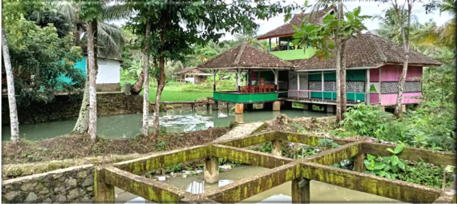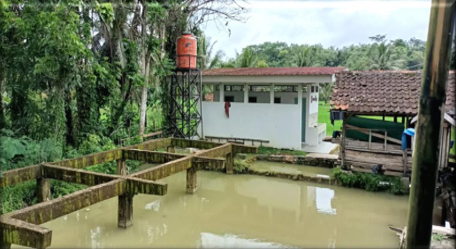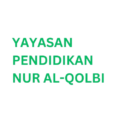Vocational High School (SMKS) Tirtayasa (Branch)
DEVELOPMENT PROGRAM OF NUR AL-QOLBI
FOUNDATION CIRACAP

The development of SMKS Tirtayasa branch in Desa Cibodas, Cibitung District, Sukabumi Regency, West Java, is highly beneficial due to the expansive land available and the school’s focus on aquaculture (perikanan). This development will have numerous positive impacts, not only for the school and its students but also for the local community and the surrounding industries. Here’s why development at this school is a great opportunity:
1. Maximizing the Use of Expansive Land for Aquaculture Facilities
SMKS Tirtayasa Cibodas is fortunate to have ample land, which can be utilized to develop state-of-the-art aquaculture facilities. The school can build fish farming ponds, breeding tanks, water quality laboratories, and processing areas. These facilities will allow students to gain hands-on experience in the practical aspects of aquaculture, such as fish breeding, water management, and fish farming techniques. Such facilities are essential for students to acquire skills directly relevant to the industry, ensuring they are well-prepared for the workforce.
2. Enhancing Practical Education and Vocational Training
As a vocational school, SMKS Tirtayasa Cibodas is focused on providing students with real-world, practical skills. The development of specialized aquaculture training areas will give students an immersive learning experience, allowing them to directly engage with the processes of aquaculture, from fish farming to sustainability practices. This hands-on training is crucial for preparing students to enter the aquaculture industry, one of the fastest-growing sectors in Indonesia.
3. Fostering Industry Partnerships
By developing aquaculture facilities on the school’s land, SMKS Tirtayasa Cibodas can forge stronger partnerships with local and national aquaculture industries. The school can collaborate with local fish farms, processing companies, and other industry stakeholders to provide students with internship opportunities, joint research projects, and access to the latest industry trends and technologies. These partnerships can also create pathways for job placements and career development for graduates.
4. Expanding Educational Programs to Meet Industry Needs
With access to a larger space and better facilities, the school can expand its curriculum to include advanced aquaculture technologies, such as recirculating aquaculture systems (RAS), aquaponics, and sustainable fish farming practices. Students will benefit from exposure to cutting-edge techniques and will be prepared to contribute to the development of the aquaculture industry. This also positions the school as a leader in vocational training for aquaculture in the region, attracting students interested in pursuing careers in this field.
5. Supporting Local Economy and Job Creation
The development of aquaculture facilities at SMKS Tirtayasa Cibodas will have a significant impact on the local economy, especially in a rural area like Desa Cibodas. By training skilled professionals in aquaculture, the school will help create a more qualified workforce for the local fish farming industry. This can lead to job creation in areas like fish farming, water quality management, fish processing, and even aquaculture business development. Additionally, local businesses may benefit from the increased demand for materials, equipment, and services needed to support the school’s aquaculture program.
6. Encouraging Environmental Sustainability
The development of sustainable aquaculture practices at SMKS Tirtayasa Cibodas will not only enhance education but also promote environmentally friendly practices. The school can integrate sustainable fish farming practices, such as integrated farming systems, zero-discharge water management, and eco-friendly fish feed. Teaching students about these practices will not only make them more competitive in the job market but also help them contribute to preserving local ecosystems and promoting sustainable aquaculture.
7. Increasing the School’s Appeal and Enrollment
The development of specialized aquaculture facilities will make SMKS Tirtayasa Cibodas a more attractive option for students, particularly those interested in pursuing careers in the aquaculture or fisheries industries. The expanded facilities and advanced training opportunities will draw students from both local and neighboring areas, increasing school enrollment. A higher number of students will, in turn, help improve the school’s reputation and provide more resources for its programs.
8. Enhancing Community Engagement and Education
With its expansive land and focus on aquaculture, the school can become a hub for community education. SMKS Tirtayasa Cibodas could organize community workshops, training sessions, and aquaculture demonstrations for local residents. These initiatives can help local farmers, entrepreneurs, and small businesses improve their aquaculture practices, providing them with valuable skills and resources. This strengthens the relationship between the school and the local community, creating a mutually beneficial environment.
9. Improving Food Security and Local Supply Chains
As the aquaculture sector is essential for food production, SMKS Tirtayasa Cibodas’ development can contribute to local food security. By teaching students efficient fish farming practices and increasing local fish production, the school can help improve the availability and affordability of fish products in the Sukabumi region. This contributes to the local supply chain and reduces the reliance on imported fish, supporting the broader goal of sustainable and self-sufficient food production.
10. Building a Sustainable Future for Aquaculture
By focusing on modern, sustainable aquaculture techniques, SMKS Tirtayasa Cibodas is not only providing vocational training for the present but also preparing students to be part of the future of aquaculture. Graduates will be equipped with the skills needed to meet the growing demand for fish products globally while minimizing the environmental impact of aquaculture practices. This approach aligns with Indonesia’s goals to increase its aquaculture production sustainably, ensuring that the industry can continue to grow without compromising ecological health.
Conclusion:
The development of SMKS Tirtayasa in Desa Cibodas, Cibitung District, Sukabumi, with its expansive land and focus on aquaculture, is a highly beneficial initiative. It will improve the quality of education, create more opportunities for vocational training, foster stronger ties with industry, and contribute to the local economy. With state-of-the-art facilities, the school will prepare students to succeed in the rapidly growing aquaculture industry, while also benefiting the broader community through education, job creation, and environmental sustainability. This development will make SMKS Tirtayasa a leader in vocational education in aquaculture, positively impacting both the students and the region for years to come.
Activity
Sector
Learning Method
Land Width
Available Buildings
: Vocational High School (SMK) TIRTAYASA
: 1. Technical Machine (Mechanic)
2. Multimedia
: On the spot learning activities, the test and practice follow to
Vocational High School (SMKS) Tirtayasa (Ciracap)
: 5.000 m2 (0.5 acre)
: 1. Boys Dormitory
2. Girls Dormitory
3. Mushola
4. Classrooms
5. Meeting Hut
6.Fish Ponds



Planing of Development and Contruction
- Land Expansion 150.000 m2 (15 acre)
- Contruction of 20 Classrooms
- Practical Room & Mechanical Production
- Multimedia Practical Room
- Theatrical Room (Mini Cinema)
- Science (IPA) Lab Room
- Administration Room
- Counceling Guidance Room
- Teachers’ Room
- Mosque and the equipments
- Teachers’ Dormitory (50 persons capacity)
- Students’ Dormitory (1000 students capacity)
- Toilet Service
- Medical Service (Medical Clinic)
- Pre-School Infrastructure Service (10 wards)
- Sport Service (Futsal, Volley Ball, Badminton, and Table Tennis yards)
- School Yard (School Ceremony and the equipments)
- Exploring Fish Ponds and the equipments
- Supplying Supported Farming Facility
- Livestock Stable and the equipments (500 cows capacity)
- Landscaping (Park, Playing Park, etc.)
